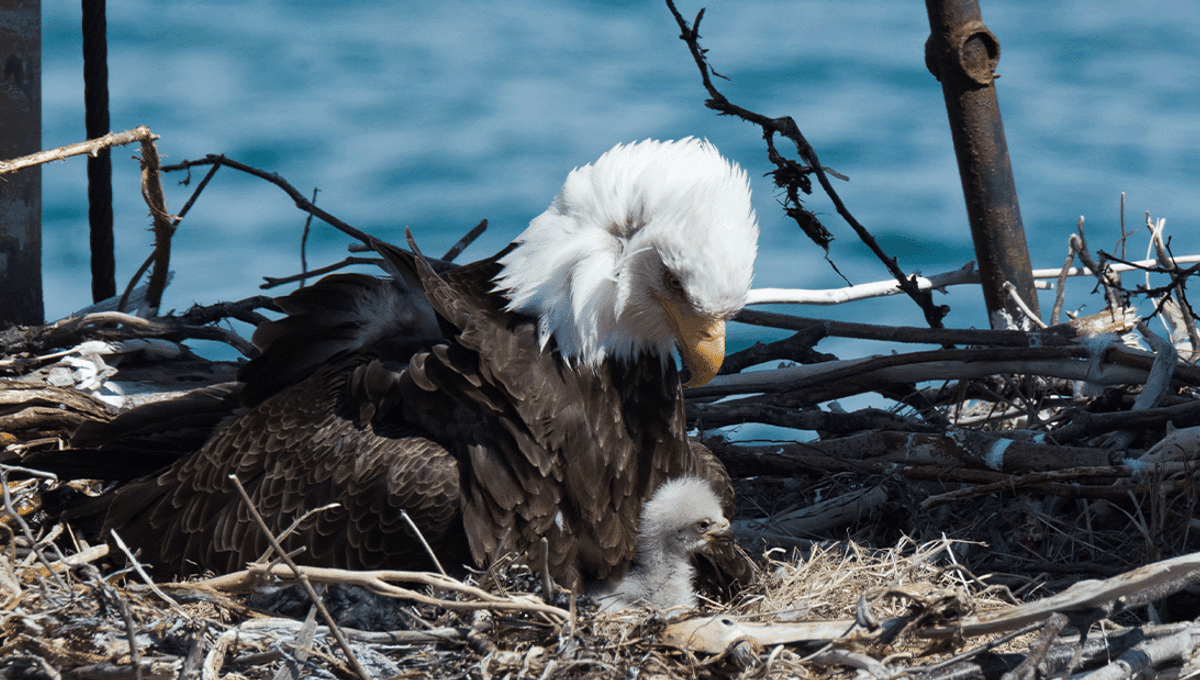
Few birds are quite as internationally recognizable as the bald eagle (Haliaeetus leucocephalus). Often discussed as a conservation success story after DDT (dichloro-diphenyl-trichloroethane) pesticide poisoning nearly wiped out the US population, the famous birds have bounced back and were downgraded from endangered to threatened in 1995.
However, even the national bird of the United States of America is still vulnerable to threats. A recent study has shown a dramatic decrease in breeding success and high levels of bald eagle mortality as a result of highly pathogenic clade 2.3.4.4b H5N1 influenza A virus (HP IAV).
“Even just one year of losses of productivity like we’ve documented regionally is very concerning and could have effects for decades to come if representative of broader regions,” said Nicole Nemeth, lead author of the study and an associate professor in the College of Veterinary Medicine in a statement in UGA Today.
Gs/Gd H5N1 IAV was introduced to the east of North America from Europe in December 2021, and since then, the virus has been observed in large portions of North America. Infected groups include waterfowl, raptors, and scavenging birds. Bald eagles live across North America, mostly in areas along the Atlantic coast but also in places such as the Great Lakes, along the Rocky Mountains, and the Pacific Northwest.
Bald eagles are thought to have acquired the virus through predation on waterfowl. Since January 2022, 136 individuals have been confirmed to have died from the virus across 24 US states. In Florida, Georgia, and South Carolina, the outbreak happened at the same time as the bald eagle nesting season. In four cases, adult and young eagles were observed exhibiting signs of the disease before being found dead near nests, while other eagles fell from their own nests. At two nest sites, one or both parents never returned to the nest site and were later found to have died from avian influenza.
“We had reports from people who faithfully monitor eagle nests year after year with these heartbreaking stories of an adult eagle found dead below their nest. Within a few days, often its mate and the chicks were also found dead below the nest. It is clear the virus is causing nest failures,” said Nemeth, who is part of the UGA-based Southeastern Cooperative Wildlife Disease Study (SCWDS).
In Georgia, a survey found a 47 percent nest success rate for bald eagles – 30 percent lower than the average for that area. In Camden and Glynn counties, the nesting success rate was down by 43 and 62 percent. Further inland, the nesting success rate was more consistent with previous years, suggesting the ingestion of waterfowl as the primary transmission method for avian influenza.
The team suggests that bald eagle breeding success was most impacted in areas where lesser scaup (Aythya affinis) were also observed suffering from high levels of HP IAV deaths. Lesser scaups are a prey species for bald eagles – and in the breeding season, a time when the eagles need to forage more food and have a tendency to scavenge easy carcasses, contributed to the transmission of HP IAV from the scaup to the eagles.
The team suggests that more research is needed to continue to monitor the impact on bald eagle populations.
The paper is published in Scientific Reports.
Source Link: Bald Eagles And Their Chicks Are Dying From Avian Influenza